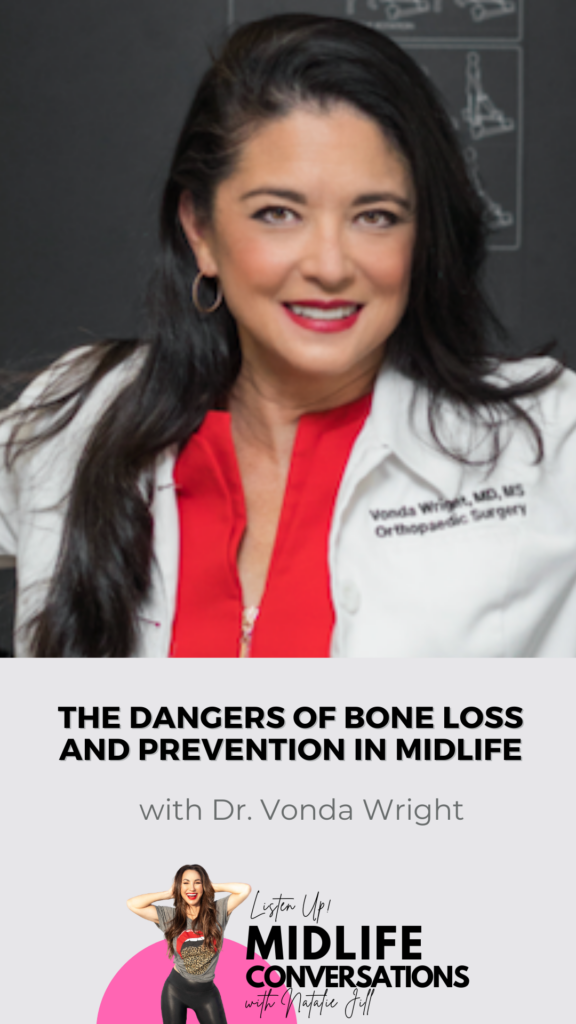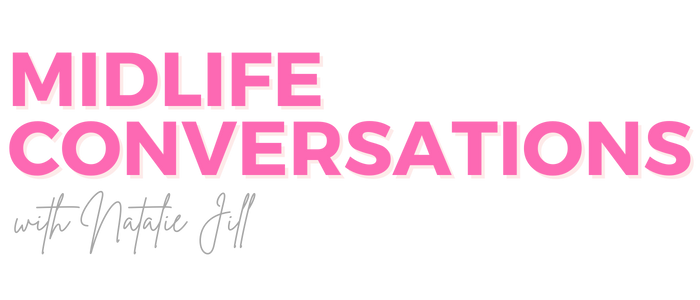The Dangers of Bone Loss and Prevention in Midlife with Dr. Vonda Wright
Let’s talk bone health. Think it’s just a “later” problem? Dr. Vonda Wright says otherwise.
In this episode, we’re digging into why you need to care about bone density—now. Wondering if lifting heavy actually matters? Or how hormone therapy plays a role in keeping bones strong? Dr. Wright, an orthopedic surgeon, gets real about the choices women need to make if they want to stay active and avoid frailty.
We’re covering what no one else tells you about osteoporosis, rapid weight loss, and those high-impact moves. Is it really as simple as adding protein and strength training?

If you’re ready to get serious about bone health, you’ll want to catch this one. Find out what Dr. Wright says you must know to build a solid foundation—before it’s too late.
Impact of Osteoporosis and Osteopenia As We Age
1 in 3 women will end up so frail that they have to go live in a nursing home. 70% of all hip fractures happen in aging women AND 50% of those never return to pre-fall function, meaning you don’t live in the same house, you can’t drive, you can’t play pickleball, etc. Even worse, 30% of broken hips lead to death. When you reach the point of bones so frail that you succumb to a hip fracture, there are usually a whole host of other things happening simultaneously – from very poor heart health, to incontinence, to some level of being demented (whether from painful distress or actual dementia/alzheimers).
How Do We Test Our Bone Health?
The best way to test your bone health is to do a Dexa Scan. Unfortunately, your insurance will not cover your Dexa Scan until you are 65. This is terrible news because once you’re 65, you’re already postmenopausal and have already lost another 15-20% of your bone density. If you’re in your 40s, it is highly recommended that you invest in paying for your own Dexa Scan so you know where you are in terms of bone health.
Importance of Muscle for Bone Health
Many women in midlife believe the myth and the lie that you have to be super skinny at all costs. We were raised to be thin but thin does not mean “lean”. In addition, we have generations that grew up sedentary. If we didn’t eat enough and didn’t strengthen our bones enough from moving our bodies under impact, we never laid down enough bone to begin with. A lot of women in their 40s and 50s already have osteoporosis (bad bone health) or osteopenia (low bone density).
The more muscle we have, the more metabolically healthy we are. Muscle is nature’s Spanx and is THE metabolic powerhouse in the body. It gives us strength to move. Muscle also pulls against bone AS we move, which in turn, builds better bones. So our goal should be LEAN muscle mass. When estrogen walks out the door we lose the anabolic (building) stimulus that we have had our whole lives. This means that we need to lift a lot heavier than our light dumbbells at home – but it does NOT mean we will become body builders like most women think when they hear “lift heavy”.
Working Out and Lifting Heavy for Bone Health
It’s important to lift heavy because in order to make an impact on our bone health, you have to create enough strategic stress to stimulate muscle protein synthesis. You want to spend about 80% of your time and effort in “base training” or zone two cardio and 20% of your time and effort into high intensity (like cardio sprint intervals).
The best places to start making an impact if you are wanting to jump in and make a difference on your bone (and overall) health is:
- Start with walking every single day
- Lift heavy weights
- Look at your nutrition and make sure you’re eating 1 gram of protein per ideal bodyweight per day (supplement with Whey if you need help meeting your protein goals)
- Focus on 30g of FIBER per day (complex carbs, avocados)
- Do “Cardio Sprints” a minimum of 2x/week (not meaning running but instead meaning get your heart rate up as high as you can for 30 seconds at a time for 4 reps, two times per week – doing whatever it is you like to do for that). I personally LOVE using my Carol Bike for this (use code NATALIEJILL to save).
What About Hormones to Maintain or Reverse Course?
When we enter menopause in our 40s, estrogen and testosterone both decline. When we are 40, we only have 1% of our eggs left. Without estrogen, you’re still building bone but you’re breaking down at a faster rate than you are building. Your hormone replacement decision should be made based on facts, not fear based on something you read in the grocery store or some old wives tale. If you’re considering adding hormones to maintain or reverse course, you should:
- Make the decision on facts
- Lift heavy, have a jumping practice in your workouts to bash your bones
- Feed yourself properly (protein, vitamin D, K2, magnesium)
This and so much more on this podcast!
🎙️ Want to listen in on a LIVE recording of Midlife Conversations?
You can listen in, hear the episode unedited prior to launch AND stay on and ask your questions to the guest! (Don’t worry! We won’t air your questions so you can stay anonymous!) Go toJoin.Midlifeconversations.com to learn more
